I always enjoyed being able to come up with activities to go with our units when the children were younger. These units were usually based on our letter of the week, and at times I would include activities revolving around one (or more) of the picture books we were reading. Through the years we have continued to read picture books, and have added in chapter books, but the activities have been sadly lacking for a while now, seeing as I just don't have the time to come up with them. That was why I was intrigued when I learned about Branch Out World and the Picture Book Explorers series. Thanks to the Homeschool Review Crew we had the opportunity to review the Paddington Bear Lit Study. Which was quite exciting because I loved the Paddington Bear chapter books by Michael Bond as a child, though I never knew there were picture books.
Paddington Bear is one of many studies that are available from Branch Out World, a company owned by a fellow homeschooling mom. Helen Royston, who lives in England, has been homeschooling for over 25 year, and has quite the passion for family learning. She has done a wonderful job creating varied learning experiences to go with this classic children's book.
We received a PDF file which I downloaded to my computer with no problems. This literature-based unit study is 69 pages long and includes instructions, activities, printables, a supply list, and go-along book and film suggestions.
We needed to obtain a copy of the Paddington Bear picture book, which is listed in the study guide. As there are quite a few editions out there, I just wanted to note that Ms. Royston has mentioned that the newest revised edition from 2007 is the one that will work best with the study. This is especially important for the art lessons, as the illustrations have changed slightly.
These are two of the books I found through my library system. Though the cover on the Paddington book is different than the one shown, it is still the 1998 edition revised in 2007, which has the illustrations needed. The Treasury has the same exact story plus six other books.
There are other supplies you will need in order to complete this literature study. Of course, paper and ink will be needed to print out the pages. Thankfully most of the pages were simple black and white. We also used cardstock to make some of the pages and mini-book printables sturdier. Also needed are normal school supplies, such as pens, pencils, crayons, glue, and scissors. There are also materials that will be needed, but will vary depending upon the age of your children and which activities you decide to complete, or skip. I will note at this point, that some of the supplies may be a bit harder for parents to find, especially if you live in a rural area in the United States as we do. For instance, caster sugar and seville oranges are needed for the recipes, and those are not items I can find around here. Ms. Royston assured me that American granulated sugar should be able to be used in a pinch, and regular oranges would possibly work for the marmalade recipe. Other than that, the recommended supplies should be easily obtained, or substituted.
I found it helpful to have 3-prong pocket folders for putting together the children's studies. We stored the papers in the pockets as we went along, and when we were finished I assembled them like logbooks.
There are actually multiple suggestions for recording and assembling the child's work in the Introduction section. This is what works for our family.
Let's take a look at what is included in the actual study.
After the Table of Contents you will find the Introduction section which includes:
- Before You Start
- How to Record Your Child's Work
- Before You Start Exploring
- Daily Sections
- Extra Supplies You Might Need
The author explains the premise behind her Picture Book Explorers and then goes on to make sure you, as the parent, know what you need to have handy before you start your study, as well as listing the different suggestions for recording the child's work. In "Daily Sections" Ms. Royston gives an overview of what each day will focus on. Finally, the "Extra Supplies" section is where you will find the list of additional books, plus materials needed each day.
The remainder of the study is then divided into two main parts.
The first, which is comprised of 23 pages, is devoted to the different days of the study.
- Day 1- Exploring the Setting
- Day 2- Exploring the Words
- Day 3- Exploring the Pictures
- Day 4- Exploring Science
- Day 5- Maths, Crafts & More
In "Exploring the Setting" we looked at where and when the story took place. We looked at maps and flags for both Peru (where Paddington came from) and England (where he ended up), and explored the time period with a timeline.
In "Exploring the Words" we learned more about the author and looked different aspects of language arts, such as themes and grammar. The children also wrote/dictated narrations and worked on vocabulary.
In "Exploring the Pictures" we learned about the illustrator, then we looked at different aspects of art using the book as our guide. We looked at architecture, plus principles of design, overlapping, and emphasis using different illustrations in the book. We also did a picture study. This is the part where it is imperative that you have the correct edition.
In "Exploring Science" the author took various incidents that happened to Paddington and turned them into science observations/experiments. There are a few ways to explore foam, which is what we focused on, but there is also an observation about steam, both of which Paddington plays in while getting ready for his bath. Then we learned a bit more about Andean bears, or Spectacled bears, which is the kind of bear Paddington is.
The "Exploring Maths, Crafts & More" section includes some fun math activities, some extra crafts and recipes, plus ideas for additional activities.
There is then a Bibliography listing where the author of the literature study got her information.
The second main part of the literature study is the appendix, which is comprised of 38 pages. This is where you will find all the printable pages needed to put together your logbook/notebook/lapbook, such as the maps, flags, timeline and minibooks. There are also fact sheets to help you fill in the information. You will find information on England, Peru, migration, and Spectacled bears.
How did we use the Picture Book Explorers Lit Study?
I will start by saying, in typical homeschooler tradition, we deviated slightly from the way it is meant to be completed in order to make it work for our family. The idea is to work on the study for five days, reading the book each day and then completing the activities. Now, if this was all we had been working each day, I can see this working quite well. Once you complete a week's worth of work you and your child(ren) will have focused on all the main subjects (social studies, language arts, art, science, and math). I can even see how these studies could work as a full curriculum for younger children if you wanted them to. However, we were using it as more of a supplement, adding to our days. If you have been reading my blog for any length of time, you will know that this truly is typical of me. When we were doing letter of the week, we took 2-3 weeks per letter, same with our units in our core curriculum that were supposed to take one week a piece.
We really are relaxed homeschoolers, and I love being able to spread out the work. So, this is what we did. We read the book, then took a few days to work through as many of the activities as we could in a section, then when we moved to the next section we re-read the book, sometimes reading an older edition. We did this while working on our other subjects and participating in two summer reading programs. In fact, there are times we took our materials to the library and worked on them there.
We enjoyed the opportunity to work on map-skills, locating Peru and England and finding details.
I loved that there were different maps to use. I chose to utilize all of them, though that was not required. I thought it would be neat to focus on the whole world, then narrow down to the continents, and then the actual countries as we turned the pages in their logbooks.
And Amelia made us a welcome to England tea-time meal.
The children really enjoyed putting together country posters:
We learned some really neat bits of trivia about Peru, England, and the world that took place in the 1950's using the timeline, then we moved on to learning information about the author during the days of "Exploring the Words."
I worked on the grammar with the younger children, utilizing the little mini-book on Noun-Verb agreement.
Then all the children worked on vocabulary and narration.
Hannah's Narration Picture
Harold's picture with the narration he dictated to me.
Amelia even wanted to treat everyone to a reading of her narration, recited with her version of an English accent.
Additionally, the children and I are all still working on stories inspired by one of their favorite stuffed animals/toys.
The children then had fun learning about art. We used a few different pages from the picture book to focus on various aspects of art, including layering, emphasis, and doing a picture study. We even talked about architectural features.
Tabitha's watercolor picture showing layering.
Amelia's drawing and collage.
There were fun get-your-hands-messy experiments during our science time. The children had fun learning about foam.
We also learned more about the Spectacled bears.
The last day of the study had us working on math. We explored parallel lines and found numbers in the illustrations. I then had the younger children work on some addition, while the older girls worked on multiplication.
I enjoyed making these railroad track papers for them to make parallel lines in.
Ms. Royston had mentioned using toy railway tracks to demonstrate the parallel lines because of Paddington being discovered at the station. Seeing as we don't have any, I decided to incorporate the tracks a different way.
Throughout this review period we have also been reading the original chapter book, A Bear Called Paddington. Did you know the picture book is based on the first two chapters of this book? I didn't at first. One of the activities is to compare the details in the chapter book and the picture book. One thing we haven't gotten to, seeing as we are still working on our stories inspired by our stuffies, is taking a favorite chapter book and adapting the first two chapters into a picture book. I plan on working on this idea, along with Tabitha and Amelia. It sounds like fun.
I was thrilled to find out that our library system had the Adventures of Paddington Bear show on DVD, so we got to watch that during our evening show time. These are older shows with the stop-motion animation, which were really cute and funny, though each episode was actually quite short, around five minutes in length.
Now that we have finished our logbooks, we will be celebrating with a party featuring the new Paddington movie where we will be enjoying buttered toast with marmalade, strawberry tarts, and tea. Now that we've read the book, it will be fun to see all the differences in the movie.
You might have been able to tell that we've had a blast with this literature-based unit study from Branch Out World. There are so many different hands-on activities! The study itself is very well organized, plus it has all the information you need, unless you want to delve into further study on your own. But everything needed for the lesson is laid out in the Daily Sections, or provided on the Fact Sheets. Though you will need to look up current population information. I also appreciate that all of the children, from 6 year old Harold to 11 year old Tabitha had plenty of activities to keep them busy.
If you would like your children to enjoy some hands-on activities while exploring a classic children's book, I would highly recommend this literature-based study from Branch Out World. It's wonderful for busy moms who don't have the time to develop their own unit studies. I absolutely LOVE that all the printables are a part of the study and there isn't a lot of parent-prep work involved in them.
I also had to mention how very helpful Ms. Royston was. Any time I had a question, she replied to my emails promptly, and was able to help me out. She is also very active on social media and I loved when she commented on my posts.
Such a wonderful study from a wonderful company.
You can find Branch Out World/Helen Royston on Facebook, Twitter, Pinterest, and Instagram.
Don't forget to click on the banner below to see what my fellow Crew Mates had to say about the Lit Study from Branch Out World.
If you would like your children to enjoy some hands-on activities while exploring a classic children's book, I would highly recommend this literature-based study from Branch Out World. It's wonderful for busy moms who don't have the time to develop their own unit studies. I absolutely LOVE that all the printables are a part of the study and there isn't a lot of parent-prep work involved in them.
I also had to mention how very helpful Ms. Royston was. Any time I had a question, she replied to my emails promptly, and was able to help me out. She is also very active on social media and I loved when she commented on my posts.
Such a wonderful study from a wonderful company.
You can find Branch Out World/Helen Royston on Facebook, Twitter, Pinterest, and Instagram.
Don't forget to click on the banner below to see what my fellow Crew Mates had to say about the Lit Study from Branch Out World.











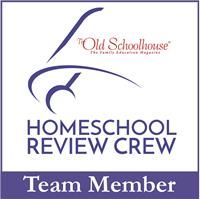
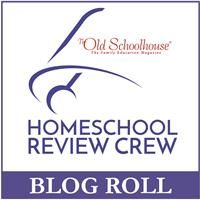











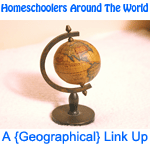

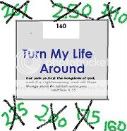
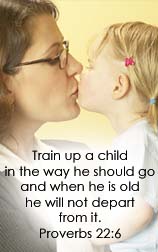



![[PREMIO2009.png]](https://blogger.googleusercontent.com/img/b/R29vZ2xl/AVvXsEjXD_Gx-wZ9EM5hXKrEYLksEBkYfRQtmb8VDVTDG_yyLggQoFIstZsh4zszdG20KqErZicRzEhiNYLty7j3IMXJYsABqkXjr8pp-ncj71xCbpxlXGbGpZq2fTuDQqq1RMKV4DPcDBnBViA/s1600/PREMIO2009.png)
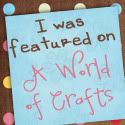
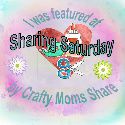


No comments:
Post a Comment
Thank you for visiting my blog today. I love to read your comments, so please leave me one if you have the time.
Blessings